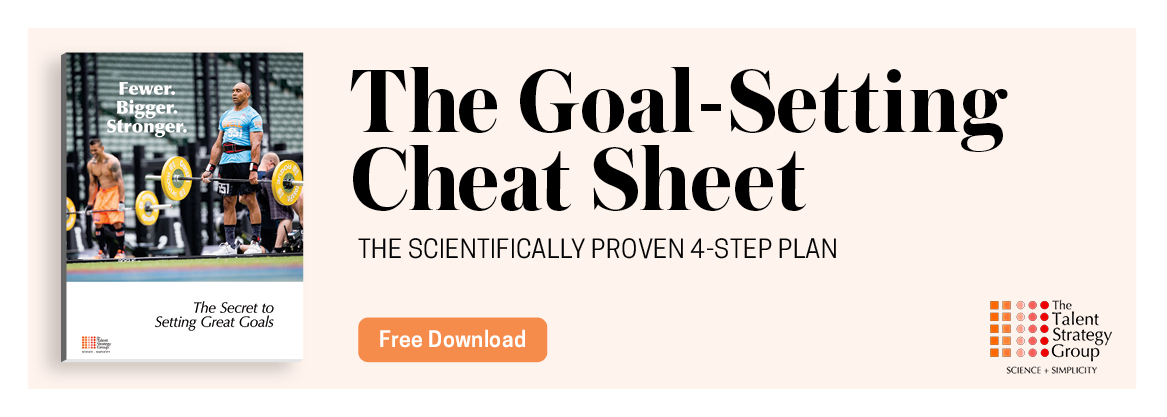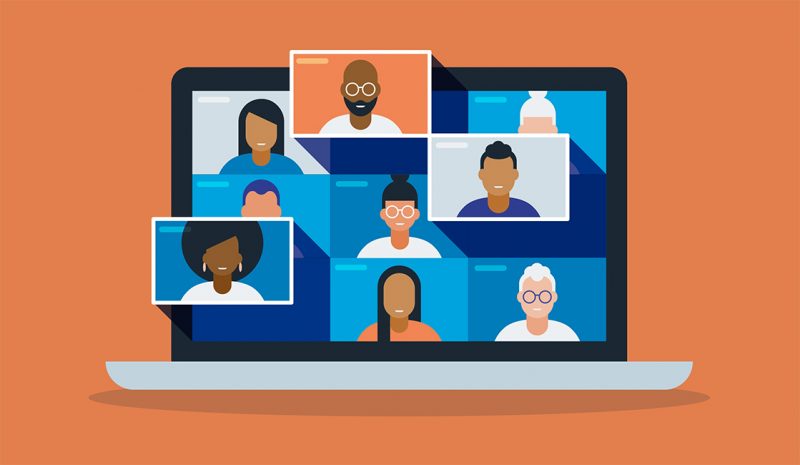Want to improve equity and diversity in your organization? Start by expanding your network.
By Robyn L. Garrett and Kyle V. Hiller
Improving racial equity, diversity, inclusion, and belonging is one of the most important imperatives of our time. If we in the corporate world don’t actively work to repair broken systems and inadequate representation, the results will be disastrous for our teams, our profits, and our humanity.
But to do that, leadership needs to step up to the plate. We can’t expect our old playbook to suddenly produce new results. It’s time to reach deeper into your network and leverage an untapped resource: your weak ties.
Sign up for the monthly TalentQ Newsletter, an essential roundup of news and insights that will help you make critical talent decisions.
In a recent whitepaper, we shared three core areas that are essential for building resilience: mindset, wellness, and network. While virtual and hybrid work environments have brought new challenges to maintaining our networks, we must also consider the diversity of relationships we have within those networks.
The truth is diverse relationships in the workplace are often missing, and that lack of diversity is impacting you, your employees, and your business. Expanding your network and reaching out to weak ties is an incredibly effective way to make a difference.
The Ties That Bind
Your network consists of a combination of strong and weak ties. Your strong ties, or strong relationships, are made up of people who are close to you professionally and personally and support you.
A strong relationship with a skilled coworker can be a source for developing new ideas and forge potential collaborations that move your company forward. Strong ties can also be with other businesses, organizations, and associations.
Outside of work, a strong relationship with a friend will be fruitful when you’re having a tough time emotionally, or even financially. They’ll be empathetic and understand your reasoning, and they’ll know what you’ve been through and have a sense of how you perceive the world. Building strong ties takes time, effort, and energy. It’s a long-term relationship, so both of you need to nurture it.
On the other hand, weak ties are relationships that just aren’t as developed as the strong ties you and your company have. They could be acquaintances who you met at a conference but never followed up with, or new relationships with other companies, new employees, or new partners.
Weak ties can also often be found in your relationships to certain communities—ones you haven’t explored enough over time to form a strong tie. For many companies, these weak ties are often with underrepresented, marginalized communities. This has a direct impact on equity, diversity, and inclusion.
What Are Biases and Who Has Them?
Bailey Maryfield defines implicit biases as “associations made by individuals in the unconscious state of mind.” This means individuals can act in discriminatory ways without knowing it because their “perceptions have been shaped by experiences, and these perceptions potentially result in biased thoughts or actions.”
These experiences are often drawn from stereotypes and long-term exposure to misinformation or disinformation about certain groups. Maryfield also suggests “[n]o one is immune from having unconscious thoughts and associations, but becoming aware of implicit racial bias creates an avenue for addressing the issue.”
Employers and hiring managers must actively implement strategies to identify biases within themselves and within their workforce. They’re also responsible for reaching out to communities outside of their biases and encouraging and engaging in hiring practices that promote diversity.
A company’s lack of diversity isn’t always merely tied to racism, sexism, or ableism. People who don’t actively or explicitly discriminate against marginalized groups still maintain biases. In reality, everyone holds biases.
The Consequences of Bias
Bias can be detrimental to business. Diversity, in the short and long term, promotes exponential growth. According to Bailey Reiners, who cultivated a myriad of statistics from various studies on diversity and inclusion, “diverse companies enjoy 2.3 times higher cash flow per employee in one study over a three-year period.”
Additionally, racially diverse teams perform 35 percent better, and executive teams that are highly gender-diverse are found to be 21 percent more likely to outperform on profitability. These numbers are promising, but there’s another side to them.
As of April 2021, the national unemployment rate for all Americans was 6.1 percent. However, that number is 9.7 percent for Black Americans, 7.9 percent for Hispanic Americans, and 9.6 percent for adults with a disability. With fewer opportunities for employment presented to marginalized communities, there are fewer employees who represent those communities.
And if there are fewer employees that identify differently, then the connection employers and other employees have will likely also be weaker.
How familiar are you with these communities? How often are you exposed to their experiences and perspectives?
This disparity is symptomatic of neglect. Not enough employers and managers are hiring or reaching out to these communities, and the communities are taking notice. The longer this goes on, the weaker the ties get. Worse, those weak ties may become bad ties as companies continue to neglect marginalized communities and maintain homogeneity in their workforces. It makes the neglect appear deliberate.
Reiners pointed out that, according to other studies, 57 percent of employees say they believe their companies need to improve diversity within the internal workforce. Nearly half see it as a need, but unfortunately, 41 percent of managers are “too busy” to prioritize diversity.
Yes, it’s easier to get comfortable with the strong ties you’ve already developed and currently maintain. But that’s not an excuse. Working toward growing weak ties benefits your company, its growth and outreach, its future opportunities, and its employees. Hiring and collaborating with different people with diverse experiences and backgrounds benefits the communities exponentially as well.
How to Actively Make a Difference
While everyone has biases, there are tactful ways to raise awareness of those biases and dismantle them actively. To include and integrate more diversity in your workforce, take these four steps.
Step #1: Commit to neutral hiring criteria
Geoffrey L. Cohen suggests in a study that “[m]any Americans experience a tension between their meritocratic values on the one hand and conscious or unconscious prejudicial beliefs on the other,” and the way to resolve this tension (especially when it comes to the hiring process) is to change the definition of merit.
Cohen suggests people “spontaneously construct and reconstruct criteria of merit in a way that advantages positively stereotyped groups” and this constructed criteria enables people to discriminate “while resting assured of their personal fairness and objectivity” is ‘right’ and properly based on merit.
Instead, shape hiring criteria that eliminate stereotypes promoted by preconstructed standards and remove discriminatory factors on race, sex, and ability. Develop new, objective criteria that are relevant to the skillset, and have employees or consultants who are outside of the homogeneity of the workforce evaluate and revise your criteria.
Step #2: Be mindful of experiences, too
Being objective in the hiring process is useful, but only to an extent. A person’s cultural experiences shape the way they view the world and impact their values. Their experiences may have also put them at disadvantages that other groups may not have had to face.
Diversifying your workforce isn’t merely about having people with different experiences, traits, or abilities for the sake of them being there, or for some pat on the back from HR—it’s about implementing and integrating them into the company and its mission. Going into the hiring process with too much objectivity can lead to colorblindness, which is detrimental to diversity.
Instead of ignoring their differences, understand and sympathize with other people’s experiences. In doing so, you’ll become more aware of these communities and their needs, fulfill them as an employer, find ways to support their communities, and ultimately promote progressive inclusivity that’s reflective of the trajectory of the American population.
Step #3: Affirm identities
Your employees may not be aware of their own biases, which could be a source of conflict once you begin hiring and integrating diversity. Biases dictate a person’s ideologies on how they want the world to be. People may see those who are different from them as threats to their ideologies, and this may generate behavior like victim blaming, avoidance, or deliberate ignorance through maintaining colorblindness.
They may see others as “equal” when in reality, they don’t have access to equal rights. This is where affirming alternative sources of identity can be helpful.
Draw a line of how your employee that may have harmful biases can relate to the other person or people with whom they have biases against. Do they both have children? Did they both attend the same schools or universities? Do they bring similar ideas to the workplace?
Identifying a person’s own self-worth and value first before encouraging interaction and integration will help alleviate some of the protective boundaries they’ve assembled. Break the ice with some common denominators.
Step #4: Reach out to the communities where your biases lie
Consider your relationships with the communities your company doesn’t represent or underrepresents. Are you participating in the community at all? This could stem from volunteer work, collaborating on programs and events (which can lead to recruiting), and educating yourself through research and interpersonal conversation about community needs and wants.
How can your company serve this community and build alongside them? This type of work will prove immensely beneficial in the long run as the U.S.’s diversity continues to swell and become much more visible.
Recruiting, Integrating, and Strengthening for the Future
Chances are you already know what you do well. But remember when you first sat in a job interview and struggled with the question about what your weaknesses are? Have you answered that question with regards to the weaknesses of your company now?
Examining weak ties is useful. The people you haven’t worked to include can become a strength through networking, collaborating, hiring, and actively practicing awareness of biases.

In Mark S. Granovetter’s The Strength of Weak Ties, he says “it is through these networks that small-scale interaction becomes translated into large-scale patterns, and that these, in turn, feed back into small groups.” If you aren’t working to become more aware of your weak ties, your business will suffer.
In our Building Resilience whitepaper, we note that “[a]t companies led by a homogenous group, this tendency limits the success of referral programs designed to increase diversity. However, if those same programs are specifically designed to activate employees’ networks of weak ties, recruiting efforts can become more diverse.”
Align recruiting, hiring, and retention for long-term success, and work diligently to minimize bias.
Robyn L Garrett is chief customer officer at AIIR Consulting, a leadership development firm that helps leaders navigate change and shape a better future. You can find her on LinkedIn or Instagram at @youcantfightthefuture.
Kyle V. Hiller is a writer, journalist, and media artist as well as a leadership content contributor for AIIR Consulting. He has been featured in many publications including Paste and Philly Metro and he was the winner of the 2020 Lenfest Institute for Journalism Next Generation Grant. You can find him online at kylevhiller.com and LinkedIn.


